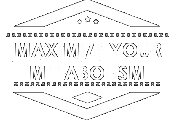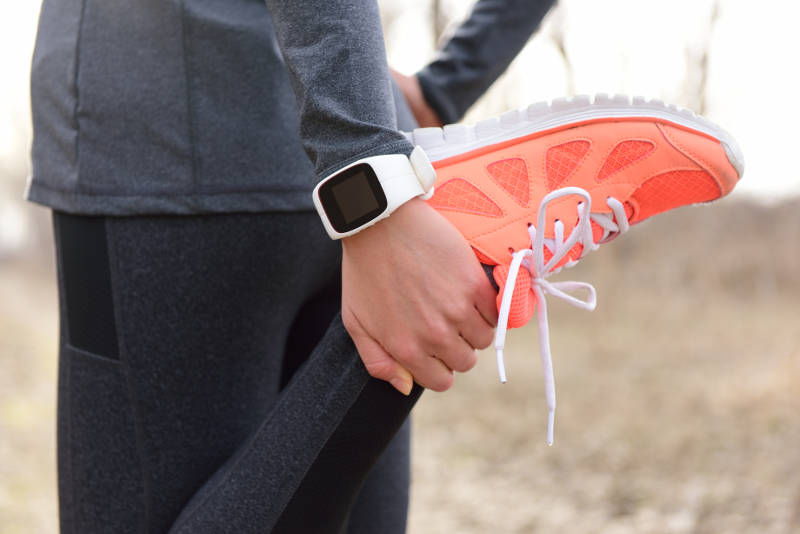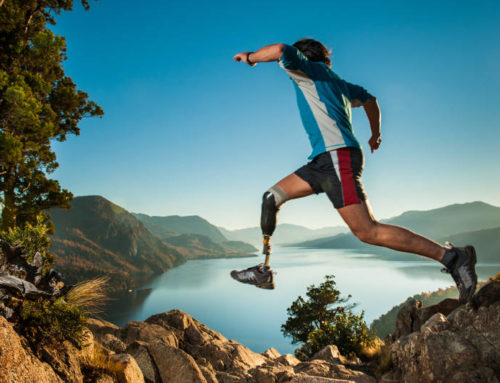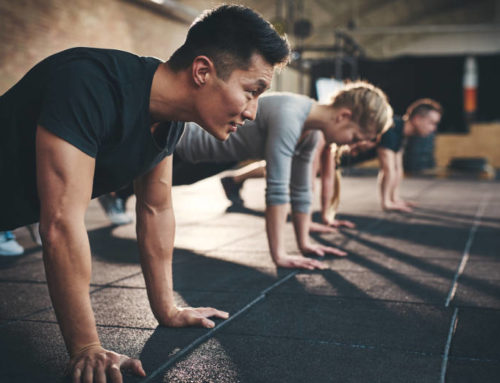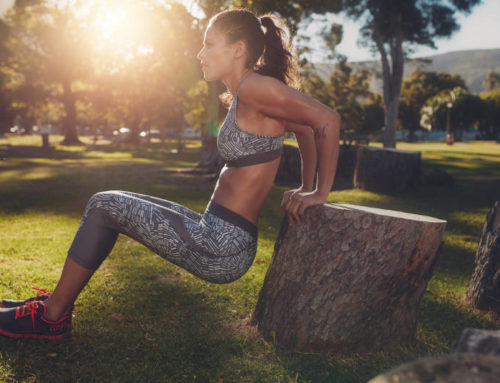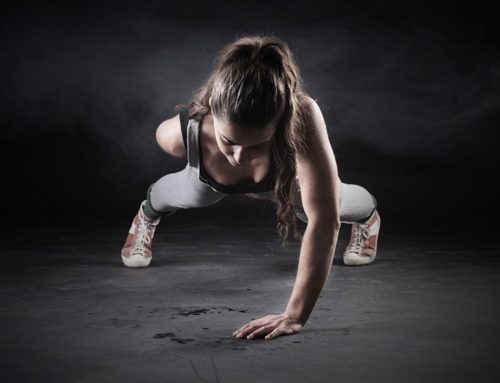“If done right, massage therapy boosts your metabolism and health, and reduces stress. Here’s how to get the most health benefits from a massage.”
To many newcomers to the Maximize Your Metabolism program, treating yourself to a therapeutic massage may seem to be just a pretentious self-indulgence, the kind of pampering that’s to be enjoyed only by those who can afford to frequent a pricey spa or exercise boutique.
The truth is that massage therapy can do a lot of good for anyone. It’s especially good for those who are serious about:
- improving their health
- reducing their physical and mental stress
- and maximizing their metabolism
The aim of massage therapy is to work on the body in order to free up the mind. But it also frees up all the toxins stored within your muscles. And it relieves the destructive stresses that are embedded within your other vital systems.
The concept of a mind–body connection dates back to the ancient Chinese, who believed that all illness was the result of imbalance and disharmony between the body and the mind.
German psychoanalyst Wilhelm Reich has probably done as much as anyone to solidify the mind–body link in recent times. Reich, a contemporary of Sigmund Freud, believed that emotions don’t just drift through the brain. He believed that emotions also show up in the body, often becoming enmeshed in muscles, where they remain unexpressed, thereby creating stress, tension, and mental and physical pain.
To get his patients back in touch with these unexpressed feelings, Reich manipulated and massaged their bodies. He put pressure on certain key areas in an attempt to undo the negative effects that had accumulated.
Reich believed that once the toxic deposits due to unexpressed emotional states were broken up and the unpleasant memories of those states were eliminated, he could then proceed to use the more traditional, talk-oriented therapy.
Massage’s Healing Effect On Mind And Body
Whatever the origins of massage therapy, it works. It has a tremendous healing effect on both mind and body. More and more people are turning to massage for relief.
Let’s face it, most Americans do things to the extreme. They’re so focused on their work that they don’t even notice that they’ve sat all day staring at their computers or performing tedious tasks around the office. Naturally, they end up with taut muscles, a stiff neck, and a backache. Massage therapy works wonders to relieve their pain and tension.
Scientific as well as psychological notions as to why massage therapy is beneficial abound.
- The most popular theory is that toxins such as lactic acid accumulate in the muscles through normal metabolism and exercise. Most of these toxins are removed by the flow of blood through the body.
- But knots sometimes form in the muscles, resulting in pain.
- Stroking, kneading, and other manipulations used in Swedish and other forms of massage bring about the hasty removal of both the knots and the toxins.
Massage Is Catching On
No wonder that in today’s go-go, high-stress society, therapeutic massage is rapidly gaining even wider acceptance. The newcomers tend to be people in high-pressure careers, such as middle and upper managers, CEOs, stockbrokers, bond traders, and lawyers. But the list doesn’t stop there. Doctors, business owners, housewives, mothers, clerical workers, and people in many other walks of life are availing themselves of massage therapy as a way to increase their productivity while reducing their daily stress. They go to massage therapists because they want to relax and unwind.
Most health clubs and chiropractors’ offices have added massage therapy to their menu of treatments. If a prospective client is unable or unwilling to get to one of these types of places for a massage, many of them will bring the massage to the client.
In-office and in-home visits are commonplace these days, and they include everything from a full-body massage to just a “chair” massage (a special chair is set up and the client is given a fifteen-minute treatment, without disrobing).
Massage is often combined with modifications to the client’s sensory environment. For example, relaxing music, soft colors, and dim lighting can be incorporated into the process. It’s all part of a holistic, mind–body approach to good health.
How Massage Therapy Helps
Researchers aren’t precisely sure about all of the benefits that massage exerts on the human body and mind. But there is no doubt whatsoever that the benefits are significant, or that they are both immediate and long lasting. For example, they have a benefit on muscles.
How does massage help muscles?
By stimulating blood circulation and oxygen flow through the muscles, massage helps to lower blood pressure, speed up healing of injured tissue, and aid in keeping muscles supple.
But it is not a panacea, and it is not recommended for those with circulatory ailments. For those of you who are wondering, one thing massage will not do is rub away excess weight suddenly.
The list of benefits a given person can expect to attain from one massage session is quite lengthy. The list of benefits one can expect from massage performed on a regular basis is easily twice as long. Those benefits include an increased metabolic rate, which comes about by improving how all of the other bodily systems work.
For example, you’ve heard the expression “the chain is only as strong as its weakest link.” Well, the body can function only as well as its weakest link, and the metabolism can be only as healthy as its weakest link. Massage helps soothe the stress away from many of our internal organs:
- the muscles and all of the other systems in our body.
Our body simply functions better when you’re less stressed.
Here are just a few ways in which massage therapy benefits our body . . .
Massage Therapy Benefits Our Body
Massage both calms and relaxes. Part of that has to do with the relaxed environment and the therapeutic context in which the massage generally occurs. The professional yet caring touch of a qualified massage therapist heightens this soothing effect. It works out knots in the muscles, releases physical stress, soothes the mind, and just plain feels good.
Massage promotes flexibility, since many massage routines involve stretching and caressing tired and aching muscle groups. It kneads away stress and improves the elasticity of the muscles.
Massage eases pain, tension, and fatigue for those suffering from a variety of medical conditions. Conditions including low-back pain, cancer, and sickle-cell anemia. This pain-reducing capability is thought to be the result, in part, of the ability of massage to increase the body’s natural production of the brain chemical serotonin, which is associated with pain reduction.
Massage can relieve respiratory conditions such as asthma and emphysema, according to the Encyclopedia of Natural Healing. It can also balance the nervous system and improve sleep quality.
Circulation And Metabolism
Therapeutic massage is especially beneficial for men and women who want to improve their metabolism. Because it improves circulation—and circulation aids proper and effective metabolism.
Massage has long been associated with pain reduction. The reason, of course, is that massage alters circulation.
Relaxation is a physiological reaction that causes blood vessels to dilate, improving blood flow. In addition, proper massage can . . .
- increase the flow of oxygen to the skin and muscles,
- prevent illness by boosting the immune system,
- and improve the circulation of the lymph and blood vessels, which replenish the tissues with needed nutrients.
Blood flow is important to improving the metabolism and oxygenating the blood, as discussed earlier.
Types Of Massage Therapy
There are literally hundreds of different styles of massage therapy around today. And that number is growing as massage therapists around the world dream up new approaches. There’s everything from basic Swedish massage to Rolfing, raindrop massage, and hot-rock therapy. There are probably just as many different types of massage as there are reasons for having a massage performed. What’s more, you can apply the various massage techniques either singly or in combination.
- Swedish massage, the most familiar technique, uses oils to reduce friction, and it employs long, full strokes along with kneading and pounding motions.
- In the popular Japanese Shiatsu and Chinese acupressure, the fingers are used to apply pressure along certain paths on the body in order to release chi (trapped energy).
- Other techniques include deep-tissue or structural massage, and reflexology, which focuses on the feet and hands.
For those of you who have no experience with massage therapy, let me say that the therapeutic massage regimen that I recommend involves five basic strokes:
- Effleurage, to smooth and extend muscles
- Petrissage, to knead tense muscles
- Friction, to release knots deep in the muscles
- Vibration, to help minimize tension and fatigue
- Tapotement, to stimulate and excite the muscles
Swedish Massage
Most of us are familiar with the so-called Swedish massage. This is the style we so often see in the movies or on television. It uses long, gliding strokes as well as kneading and friction techniques. Its focus is principally on reducing muscle tension and inducing general relaxation.
Sports Massage
Sports massage, on the other hand, is a form of massage therapy that was developed to provide important benefits to those who engage in athletics. Whether they are professional athletes, weekend runners, or weightlifters.
The purpose of sports massage is to help . . .
- maintain your physical condition
- boost your energy, endurance, and metabolism
- improve your range of athletic motion
- prevent injuries to your muscles and tendons
Developed in the 1980s, this industry has grown to such a degree that it’s now a major component of sports medicine. And it’s a fixture at many professional and amateur sporting events.
Visit most exercise and fitness centers today and you’ll find therapists who practice sports massage. You’ll also encounter them at casual weekend sporting events such as 10K races. And major events such as . . .
- the Olympic games, Ironman competitions, Goodwill and Pan-American games, bicycle races, and big-city marathons.
Competitive athletes aren’t the only ones who can—or should—reap the rewards of sports massage, however. Anyone who exercises on this website’s recommended level can benefit from it. In fact, sports massage helps the muscles to deal with the repetitive motions inherent in the aerobic and anaerobic activities that are part of the Maximize Your Metabolism program.
Massage, Exercise, And Metabolism
When your muscles are tense, the blood can’t flow through them efficiently, so that your body doesn’t get the oxygen and nutrients it needs. As a result, your metabolism becomes sluggish, which in turn causes pain, stiffness, spasms, and cramps. Frequent massage can help you perform up to your potential and lower your vulnerability to injury.
Muscles get sore when their fibers become abnormally constricted. This can be due to tension, lack of stretching, or overactivity.
Sports massage works to get the kinks out so that muscles can perform optimally.
Deep Muscle Benefits
Sports massage differs from your garden-variety massage in both technique and purpose. A sports massage therapist manipulates the muscles, and the soft tissues around them, to spread out the constricted muscle fibers. This powerful action enhances circulation to those tissues, relaxing the muscles and reducing pain as it promotes the release of endorphins, the body’s natural painkillers, into the bloodstream.
As with other types of massage, sports massage improves the flow of lymph fluid, which carries immune-boosting white blood cells and also filters out toxins and waste products.
- Active people especially need their systems cleared of waste products such as lactic acid.
Lactic acid is one of the by-products of physical activity. It’s the end product in the metabolism of glucose during the anaerobic production of energy. Muscles give off lactic acid during exercise; as a result, it can build up in the body. Eventually, the body will rid itself of such by-products on its own.
In fact, as your body adapts to increased levels of exercise, it also improves in its ability to remove lactic acid from the system. In the meantime, massage speeds up that process. So it prepares the muscles more quickly for the next bout of activity.
Sports-massage therapists use a particular combination of massage strokes, timing them in a certain way in order to heal and relax the muscles while energizing the body. Sports-massage therapists employ different techniques, depending on whether the massage therapist is giving the massage before an exercise session or just for purposes of relaxation.
When To Have A Massage
Whenever you feel tense, achy, or out of sorts, a massage can do you wonders. Massage can also become a regular part of your metabolic-enhancing routine if you incorporate it into your weekly or bimonthly regimen.
Getting The Right Touch
Any massage that you receive will be no better than the skill and technique of the person who delivers it. Here’s what you should look for in booking your massage:
First, check with your local department of health about the regulation of massage in your area. And find out what types of credentials a massage therapist needs in order to practice.
In some localities, massage therapists need to be licensed by the state, while other areas rely on licensing by the county or city, and still others require nothing!
Second, determine whether your prospective massage therapist has the proper licensure and certification.
-
- Professionals should be certified in either “therapeutic massage” or “body work” by the independent National Certification Board for Massage.
Make sure your chosen massage therapist has . . .
- completed at least a two-year academic program in the art of massage.
- had at least the minimum number of hours of practical training required to become a Registered Massage Therapist (RMT).
If you want a proper sports massage, it may be a good idea to insist that your therapist be a member of the American Massage Therapy Association (AMTA). To check on practitioners in your area, you can visit the AMTA on the Web, at www.amtamassage.org.
Third, seek the recommendations of others.
If you’re scouting around for a therapist, there is nothing that beats references from friends.
Word-of-mouth advertising nearly always proves to be beneficial when it comes to selecting someone who will be laying their hands on you. Knowing that your massage therapist has delivered superior services to others helps ensure that he or she will deliver the same to you.
Research Into Massage Therapists
Although the above list of massage therapies is incomplete, it does form a basis for you to start your search for a technique that fits both your lifestyle and your personality.
My suggestion at this point is to do a bit of research into massage therapists in your area. Try to choose someone who is within reasonable distance of your home or place of work. And be sure that both the therapist and his/her studio fit your needs. Then relax, and let the therapist do the work for you. By the end of just one visit, you should be able to tell whether you’ve chosen well. And you will probably have made a good friend, someone who can work with you to maximize your metabolism.
Next is an article about how to exercise regularly when you don’t want to. >> Next Page (Benefits Of Exercise — Don’t Quit)
